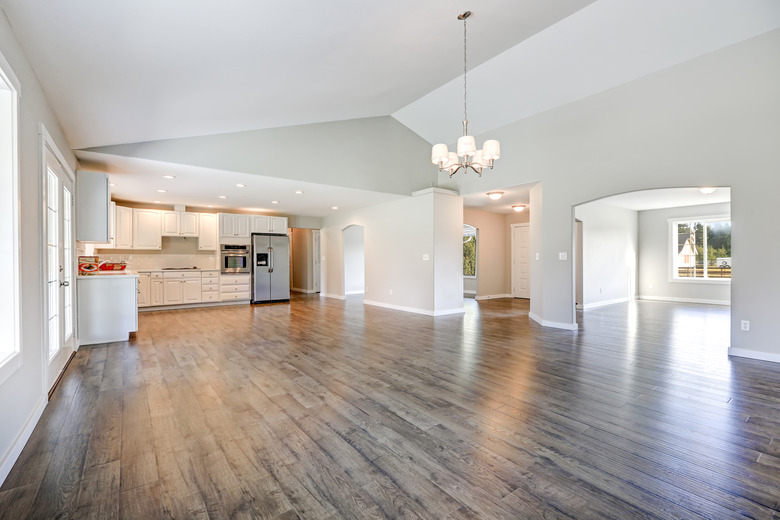How To Store Laminate Flooring
Laminate flooring is easy to install, affordable and often misunderstood, but installing it is a popular do-it-yourself project. However, a load of laminate flooring can't just be picked up and snapped in place in your home in an afternoon.
Storing the laminate boards properly gives them time to adjust to their new living space. There are a few rules to know when storing laminate or other types of flexible engineered material, such as vinyl plank flooring.
Transporting Laminate to Your Home
Transporting Laminate to Your Home
When you purchase laminate from a big box home improvement store, they will slide them out of their nook in the shelving and place them flat on a cart to place in your car. They should not be stacked upright, leaned against a wall or have a lot of items placed on top of them. This can warp the individual planks or an entire stack if they lean against each other. Make sure they are also supported in the middle of each stack.
Once the stacks of laminate flooring are in the car or truck, they should be tied down with belts or rope, according to Kronotex. This will keep them from knocking around and damaging the narrow tongue-and-groove joints. If it's raining, then avoid strapping them in the back of a truck or on the roof where they can possibly get wet.
Storing Laminate Flooring
Storing Laminate Flooring
Before installation, laminate flooring needs to be stored inside the home, either in the garage in mild climates or preferably the room where it will be installed. This will acclimate the laminate planks to the humidity levels and temperature of the interior of the house.
Consumer Reports recommends that the laminate flooring planks be stored in the home for at least one to three days before they are used. Storing the laminate flooring in the home prevents gaps and buckling as the weather changes after the planks are installed.
Storing Leftover Laminate Flooring Planks
Storing Leftover Laminate Flooring Planks
Buying extra planks of laminate is always a good idea. It saves you from wasting time with return trips to the store and often saves money if you bought the flooring on sale. Extra laminate planks can come in handy for repairs or if you plan on extending the flooring to other parts of the home. However, if the leftover laminate flooring planks are not stored properly, they may possibly not be fit to use.
Don't lean the planks against a wall or stand them on end. This will warp the planks, or they may crack under their weight. Keep them in the garage, crawl space, attic or spare room so that they will stay acclimated to the home's humidity level. Storing the planks in an outdoor shed, covered porch or a container outside will cause them to heat up and cool down throughout the seasons. This type of exposure to laminate flooring with temperature extremes can warp the boards.
Make sure they are wrapped in an old blanket or slipped into cardboard boxes from the original packaging to protect them from dust and moisture. Dust can find its way into the tongues and grooves of the individual planks and clog the narrow grooves.
